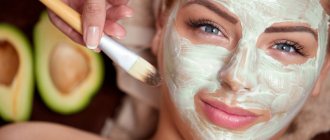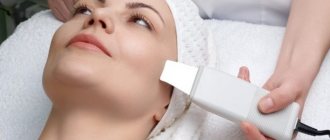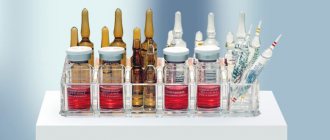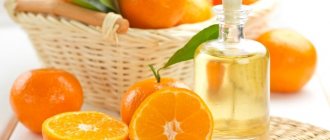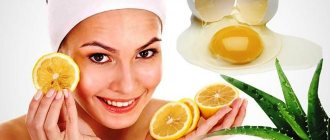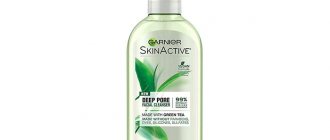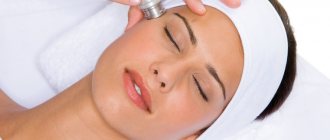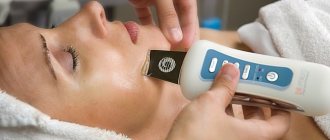Dust and dirt particles from the environment, the dead layer of the epidermis, and cosmetic residues in the pores of the face lead to premature wrinkles , age spots, clogged pores and inflammatory processes on the face.
The skin stops breathing, creams and other cosmetic substances cannot be absorbed into the skin to the required depth to clean it at the proper level.
Therefore, today there are modern cosmetic procedures that promote exfoliation (peeling) of the upper layers of human skin, called peelings.
Depending on the active substance of the peeling or the method of carrying out the procedure, procedures are divided into types.
One of the most popular safe chemical peels among cosmetologists is considered to be chlorhexidine peeling with clay.
The use of "Chlorhexidine" in cosmetology
Due to its cleansing properties and availability, the drug “Chlorhexidine” is widely known both in cosmetology and in medicine. This is a powerful antiseptic and is used to fight bacteria and viruses.
Interesting fact! Use in cosmetology began when experts determined the beneficial effects on the skin of a combination of components such as clay and Chlorhexedine.
Dermatologists have conducted studies that have confirmed the success of peeling in the treatment of oily and problematic skin prone to inflammation.
Clay removes the stratum corneum and reduces excess fat secretions, and Chlorhexidine, penetrating into the skin, destroys bacteria that cause inflammation.
At the same time, the simplicity of preparing the composition and applying the peeling, with due care of safety, made it possible to use it even at home.
Important to remember! After home peeling using the components “Chlorhexidine” and clay, you need to take extra care of your face. The skin becomes more susceptible to environmental influences.
After the procedure, you must use a cream with SPF protection.
Cosmetologists advise using home peeling from the components “Chlorhexidine” and clay for clients who have problematic and oily skin.
Its bactericidal properties control the activity of the sebaceous glands, help reduce “black spots” on the face and inflammatory processes.
Be careful! Like any antiseptic, Chlorhexidine destroys both pathogenic microflora and beneficial bacteria that are present on our skin in the required volume.
Beneficial bacteria regulate the growth of pathogenic bacteria, destroying their excess. With frequent use, there is a risk of disturbing the microflora of the skin and deteriorating the appearance of the face.
The consequence of drug abuse can also be disruption of the sebaceous glands.
Despite the fact that Chlorhexidine is a drug, it does not penetrate into the bloodstream when applied to the skin. Its use is absolutely safe.
Read the popular article on the site: Comfortable long-term hair removal: Sugaring at home. How to prepare the paste and do sugar hair removal correctly.
Benefits of using chlorhexidine for acne
The scope of application of the drug in cosmetology and dermatology is quite wide.
Chlorhexidine is used to treat various pustular diseases (pyoderma, impetigo), simple acne, and inflammation of various etymologies. Chlorhexidine has the following positive effects on the skin:
- Penetrates into the deep layers and destroys microbes and bacteria that provoke inflammation;
- Stops inflammatory processes;
- Helps remove dead cells from the surface of the epidermis;
- When an abscess breaks through, it cleans the wound and disinfects it.
Chlorhexidine solution and gel are an excellent alternative to brilliant green and iodine. This drug is in many ways superior to them in effectiveness. At the same time, it is more suitable than other antiseptics for use on visible areas of the skin, since it does not stain it, does not cause burning, is quickly absorbed, and does not leave an oily sheen. In addition, chlorhexidine does not leave marks on objects that come into contact with it.
Properties and types of clay
Cosmetic clay is an organic product widely used in cosmetology. The finely dispersed composition of clay determines its basic ability to absorb toxic substances and microorganisms harmful to the skin.
It absorbs excess fat, cleanses pores, and removes toxins. This removes the stratum corneum, oxygen begins to enter the layers of the epidermis, and the skin comes to life.
You can buy domestically produced clay at any supermarket or pharmacy. In online stores you can find a large selection of foreign clay class=”aligncenter” width=”515″ height=”460″[/img]
| Clays most suitable for home peeling with Chlorhexedine | Characteristics | Skin type | Properties |
| Green | Contains iron oxide and a huge amount of useful minerals. | For all types. |
|
| White | Consists of the mineral kaolinite. The softest of cosmetic clays, oily to the touch. | Oily, combination, prone to inflammation. |
|
| Blue | A unique natural product, the composition of which may vary depending on its origin. | Most effective for oily skin. |
|
| Yellow | Rich in iron and potassium. | For all types. |
|
| Black | The mineral complex effectively cleanses the skin and has an antiseptic effect. | Most effective for oily and problematic types. |
|
Benefits of home peeling using Chlorhexidine and clay components
Clay peeling with the addition of Chlorhexidine is a procedure that helps cleanse the skin in two ways.
Clay promotes exfoliation (peeling) of the upper layers of the skin. Timely removal of the stratum corneum of the epidermis will help maintain healthy skin and its beautiful appearance.
"Chlorhexidine" helps to destroy bacteria that cause inflammation, comedones, blackheads, and excess fatty secretions.
The combination of these components has several advantages:
- Removal of the stratum corneum of the skin due to the action of clay;
- Destruction of bacteria with Chlorhexidine;
- Drying oily skin, reducing fat secretions;
- Reducing rashes and inflammation on the face.
The peculiarity of peeling is that these two products are not so effective separately.
A clay mask is not able to cope 100% with problems on the face. And using Chlorhexidine in its pure form can dry out the skin.
Without the action of clay, as a means of removing the upper dead layer, Chlorhexidine will not penetrate to the depth required for effective action.
After peeling, the bactericidal properties of Chlorhexidine continue to act for several hours.
Despite the fact that Chlorhexidine is a drug, it does not penetrate into the bloodstream when applied to the skin. Its use is absolutely safe.
Preparation of the composition for the procedure
Home peeling, which contains Chlorhexidine, is effective for problematic and oily skin. Not all clay is suitable for the procedure!
On the packaging, the manufacturer usually indicates what type of skin this type of clay is suitable for.
The drug "Chlorhexidine" is alcohol-based and water-based. For the procedure, a water-based product with a concentration of 0.01% is used.
Peeling should be applied immediately after its preparation, since the clay begins to harden a few minutes after dilution.
Proportions for preparing homemade clay peeling with Chlorhexidine:
| Name | Quantity |
| Cosmetic clay | 2 -3 tbsp. l. |
| "Chlorhexidine" water-based | 2 tsp. |
| Water | To dilute to the desired consistency. |
Instructions:
- In a non-metallic container, dilute the required amount of clay with water, as indicated on the package.
- Add Chlorhexidine to the resulting mass.
- Mix the composition thoroughly.
Bigluconate in cosmetology
Chlorhexidine bigluconate is used in cosmetology to treat problem skin, namely to eliminate:
- Acne.
- Excessive oily skin.
- Pustular diseases.
- Single papillomas.
The product is also used to prevent the occurrence of new rashes after cosmetic facial cleansing.
Does it help with acne?
Of course, Chlorhexidine is very useful in treating acne. It destroys the causative agent of inflammation (pathogenic microflora), reduces the course of the inflammatory process itself. Due to the fact that this drug inhibits the functioning of the sebaceous glands, the skin does not become covered with oil too quickly, the pores do not become clogged, thereby preventing the formation of new acne.
Considering that the Chlorhexidine solution is not alcoholic, the applied drug will not dry out the skin too much. This is its advantage over other means.
Also, Chlorhexidine is not absorbed into the blood and is therefore harmless.
Application for cleaning
Self-squeezing pimples is essentially mechanical facial cleansing. It doesn’t matter where it is carried out, in a beauty salon or at home, the skin must be disinfected in any case. Chlorhexidine is excellent for these purposes.
The procedure itself goes as follows:
- First, you need to wash your face with water and remove all makeup.
- Wipe dry.
- Treat your hands with Chlorhexidine.
- The skin around the abscess should also be wiped with an antiseptic.
- Gently squeeze out the pimple.
- Cauterize again with the solution.
Be sure to rub healthy skin near the squeezing site as well.
It should be taken into account that Chlorhexidine should not be combined with alkaline anionic compounds. That is, before wiping your face with an antiseptic, your skin should not be treated with soap. This may reduce the effect of the antiseptic.
Wipe for papillomas
Papillomas are a manifestation of a viral disease. If they occur, you must consult a doctor. He will prescribe antiviral therapy and may advise the use of topical Chlorhexidine solution.
It is often recommended to cauterize papillomas with a cotton swab dipped in antiseptic several times a day. This does not cure the formation, but only prevents the development of infectious complications.
The duration of the procedures must be prescribed by a doctor.
Use instead of tonic
If the skin is too oily and problematic, Chlorhexidine can be used as a toner. To do this, use a cotton swab to wipe your face with an antiseptic solution once a day for 2 weeks.
Then you need to take a break so that the skin does not become overly dry.
Antiseptic masks
Face masks containing Chlorhexidine are recommended to eliminate:
- Excessive oily skin.
- Acne rashes.
- Acne scars.
- To reduce active inflammatory process.
The most used additional components are white and black clay.
For acne
The most popular mask recipes for treating acne are:
- You will need 2 tsp. solution of Chlorhexidine and black clay. All ingredients must be mixed until smooth. Completely clean your face of makeup and apply a mask. You need to stay in this state for about 15 minutes, after which the product is washed off with warm water and the face is lubricated with moisturizer.
- You need to take 1 tbsp. l. white clay, ½ tsp. badyagi and 5 drops of Chlorhexidine solution. The ingredients are stirred to form a thick paste. Wash your face and then apply a mask on it for 10-15 minutes until it dries completely. After time, the product is washed off and moisturized with cream.
- You need to take 1.5 tbsp. l. baby powder (it dries and heals the skin perfectly), ½ tbsp. l. Chlorhexidine and mix until a thick paste is obtained. The mask is applied to a previously cleansed face using a cotton pad, evenly distributed to all areas of the skin. The product should harden. Next, you need to either gently knock it off or leave it on your face all night. The next morning, knock off the mask and wash off the residue with warm water. At the end of the procedure, it is necessary to apply a moisturizer to avoid drying out the skin.
Is it possible to lighten your hair?
Chlorhexidine can be used for care and care and treatment. But not the hair itself, but the skin. The product helps to cope with itching, seborrhea and other skin pathologies that cause discomfort. It is used for irrigation, washing and in the form of applications.
Chlorhexidine is often confused with hydrogen peroxide and is thought to have the ability to lighten hair. But the product is not used for this purpose, because it does not have any effect on the condition and color of the hair.
How to prepare your skin
For any cosmetic procedure, the main condition is clean skin. Therefore, before peeling, you should carefully remove makeup and wash well.
Important to remember! Chlorhexidine is not compatible with substances found in soaps and cleansers (sodium laureth sulfate, saponins, etc.). Therefore, after cleansing, it is necessary to rinse the cleanser thoroughly with water!
Read the popular article in the category: Gel nail extensions at home for beginners step by step.
Instructions for using peeling
Note! Chlorhexidine can cause irritation and allergic reactions! First you need to test its effect on the skin on a small, inconspicuous area!
Clay peeling procedure with Chlorhexidine at home:
- Apply the peeling agent to the face, except for the area under the eyes.
- Wash with water after 10-15 minutes, not allowing the peel to dry completely.
- After peeling, use a moisturizer or mask.
Note! "Chlorhexidine" is not compatible with other antiseptics! The drug should not be applied to damaged areas of the skin.
To carry out your own home peeling, Chlorhexidine and clay will come in handy.
When not to wipe your face with chlorhexidine for acne
The drug should be used for the treatment of purulent skin rashes as prescribed by a doctor, since, like most medications, chlorhexidine has a number of contraindications:
- The presence of dermatitis - atopic, contact, seborrheic;
- Eczema in the active stage;
- Pregnancy and lactation period;
- The presence of individual intolerance;
- Increased skin sensitivity, dryness.
- Elimination of rashes in childhood (up to 12 years).
You should also be aware of certain side effects that rubbing your face with chlorhexidine for acne can cause.
If you use the drug uncontrollably, the following reaction is often observed: skin itching, peeling, skin tightness, and the appearance of new rashes. Therefore, it is important to strictly adhere to dosages and use moisturizing creams after wiping your face with chlorhexidine. In addition, it is recommended to avoid prolonged exposure to the sun during treatment with this drug, as the skin becomes more sensitive to ultraviolet radiation.
Frequency of application
Home peeling, like peeling in a beauty salon, is a procedure after which the skin needs to be moisturized.
"Chlorhexidine" dries the skin and degreases it. Clay also significantly reduces skin oiliness. Therefore, the procedure should not be abused.
An interval of 5-7 days will be optimal unless a different interval is prescribed by specialists.
Contraindications
Chlorhexidine for the face is contraindicated in the following cases:
- The period of pregnancy and breastfeeding.
- Allergic reaction to the drug.
- The presence of allergic skin diseases (atopic or contact dermatitis, eczema, urticaria).
- Excessive dry skin.
- Treatment of acne in children (under 12 years of age).
